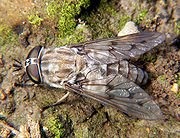| Aha What? Which? To do, to be what? He aha koe? what are you? E-aha-á koe? what are you doing? Ku-aha-á koe? what have you done? Kahu aha? what, which garment? E-aha-mai-á ki a koe? what does that do you, what harm does it do you, what is it to you? Aha is preceded by the article te when introduced by a preposition: te: o te aha, why, what for; mo te aha, ki te aha, what for, with what purpose? Vanaga.
Gaaha, to burst, to become ruptured, to have a discharge of pus, of blood. Ku gaaha te toto o te ihu. He had a nose-bleed. E û'i koe o gaaha te îpu. Be careful not to break the bottle (lit. look out lest the bottle burst). E tiaki á au mo gaaha mai o te harakea. I shall wait for the abcess to burst. Gaatu, totora reed. Vanaga.
To break, to split, to crack, to rive; fracture, fissure, break, crack, crevice (gaaha); niho gaa, toothache, broken teeth; gaamiro (miro, ship) shipwreck; gaàpu (pu 2), abortion; poki gaàpu, abortive child. T Mq.: naha, nafa, split, fissure. Ta.: aha, afa, crack fissure. Gaatu 1. Bulrush, reed. 2. (gatu). Churchill. |



